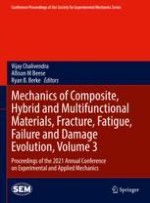Mechanics of Composite, Hybrid, and Multifunctional Materials, Fracture, Fatigue, Failure and Damage Evolution, Volume 3 of the Proceedings of the 2021 SEM Annual Conference & Exposition on Experimental and Applied Mechanics, the third volume of four from the Conference, brings together contributions to this important area of research and engineering. The collection presents early findings and case studies on a wide range of areas, including:
Recycled Constituent Composites
Damage Detection
Advanced Imaging of Composites
Multifunctional Materials
Composite Interfaces
Tunable Composites
Novel Experimental Methods
Extreme Environments
Interfacial Fracture
Integration of Models & Experiments
Mechanics of Energy & Energetic Materials
Integration of Models & Experiments
In Situ Techniques for Fatigue & Fracture
Microscale & Microstructural Effects on Mechanical Behavior
